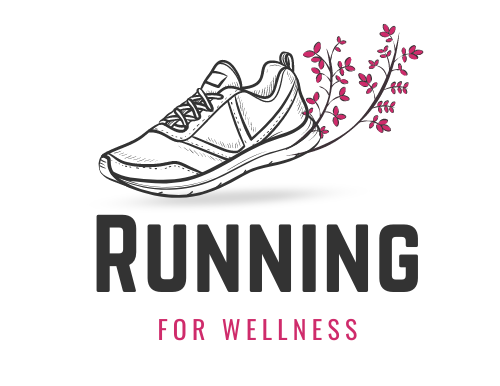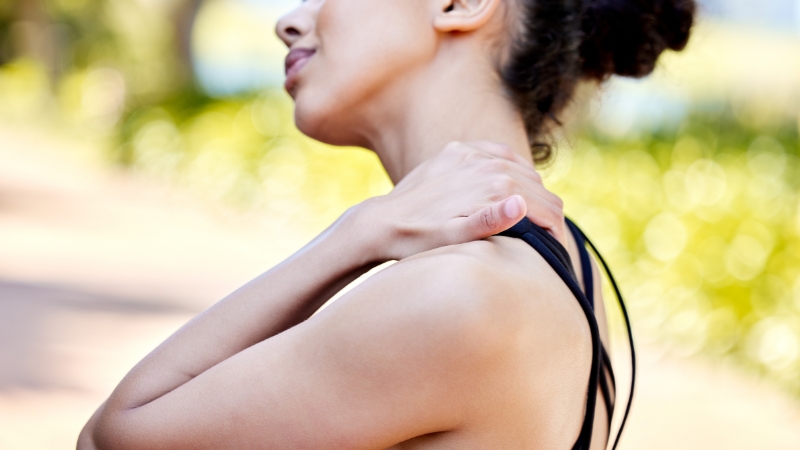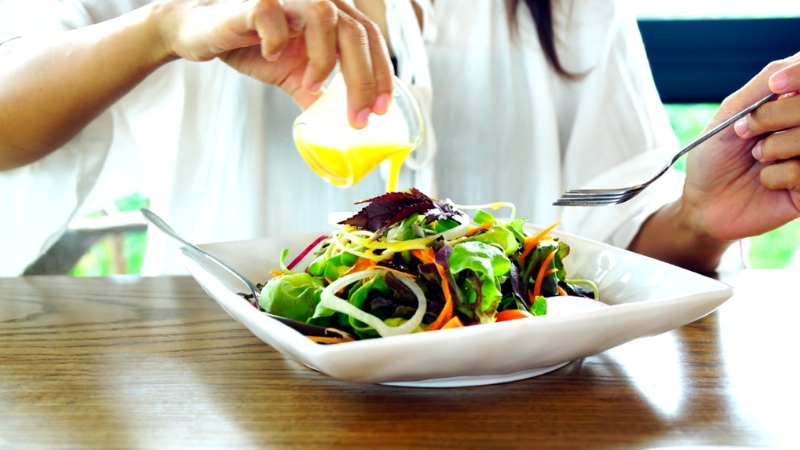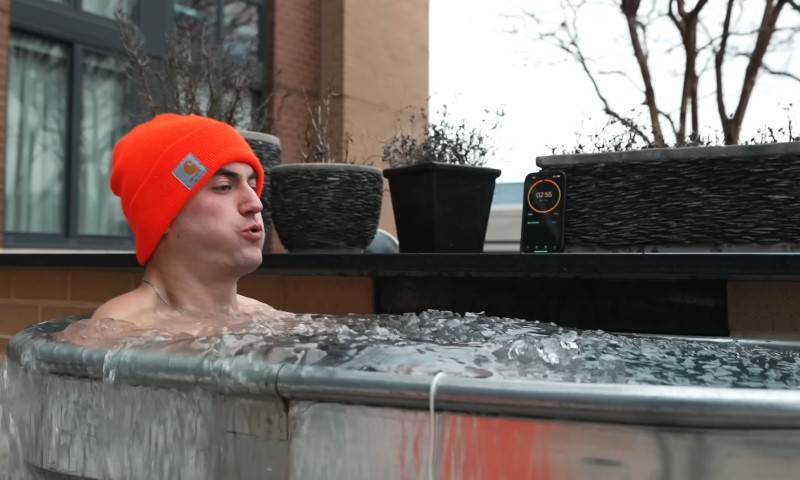Recovering from muscle inflammation without medication is not only possible but highly effective with the right strategies.
Many seek drug-free recovery to avoid side effects and foster long-term resilience.
Natural healing emphasizes balance, patience, and consistency through lifestyle, nutrition, and gentle activity.
Table of Contents
ToggleImmediate Care Techniques (First 72 Hours)
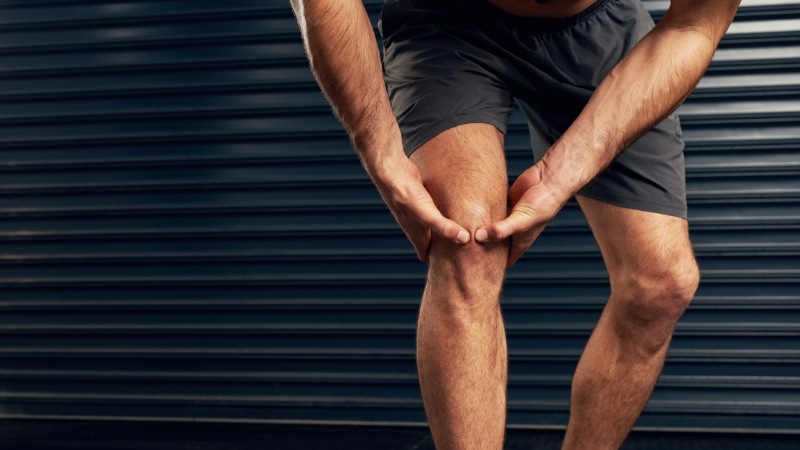
During the first 72 hours after muscle inflammation begins, the body’s natural response can intensify discomfort and limit function.
Prompt and deliberate action can limit the spread of inflammation and prepare tissues for healing.
Instead of aggressive treatment or total inactivity, focus on early strategies that protect, soothe, and promote circulation without overloading the damaged area.
Immediate care involves three foundational elements, each supported by simple, practical tools:
R.I.C.E. Method
Use the R.I.C.E. method as a frontline approach to reduce inflammation and prevent additional damage.
This strategy includes:
- Rest: Cease all strenuous activity that engages the affected muscle. Give tissues time to settle.
- Ice: Apply cold packs for 15–20 minutes at a time, multiple times per day. Always place a thin cloth between ice and skin to avoid frostbite.
- Compression: Use elastic bandages to support the area and minimize fluid buildup. Ensure compression is snug but not restrictive.
- Elevation: Raise the affected limb above heart level when possible. Elevation helps clear excess fluid and reduce swelling.
These four steps can be rotated throughout the day to maintain symptom control.
Gentle Movement
Total stillness often leads to stiffness and longer recovery.
Once pain starts to ease slightly, begin incorporating low-intensity, pain-free movements.
Emphasize:
- Isometric contractions: Engage the inflamed muscle without moving it to promote cellular activity and preserve strength.
- Avoidance of jarring motion: Do not stretch or force the muscle into extreme positions.
- Controlled mobility: Move the surrounding joints gently to maintain circulation.
Start small and observe how the body responds. If pain or swelling worsens, reduce activity and return to R.I.C.E. methods.
Sleep & Hydration
Recovery stalls when sleep or fluid intake drops. Support healing with consistent rest and proper hydration. Aim for:
- 7–9 hours of sleep nightly: Go to bed and wake up at the same time each day.
- Quality rest environment: Use supportive pillows and avoid screen exposure before sleep.
- Regular hydration: Drink water consistently throughout the day, not just during meals.
- Electrolyte intake: Replenish minerals like sodium, potassium, and magnesium after sweating or prolonged physical exertion.
- Hydration aids in flushing metabolic waste, while sleep boosts tissue repair through hormone release and cellular renewal.
Proper execution of immediate care lays the groundwork for faster recovery.
Consistency is essential, even when inflammation feels minor. Small, steady actions lead to better outcomes.
Natural Anti-Inflammatory Approaches
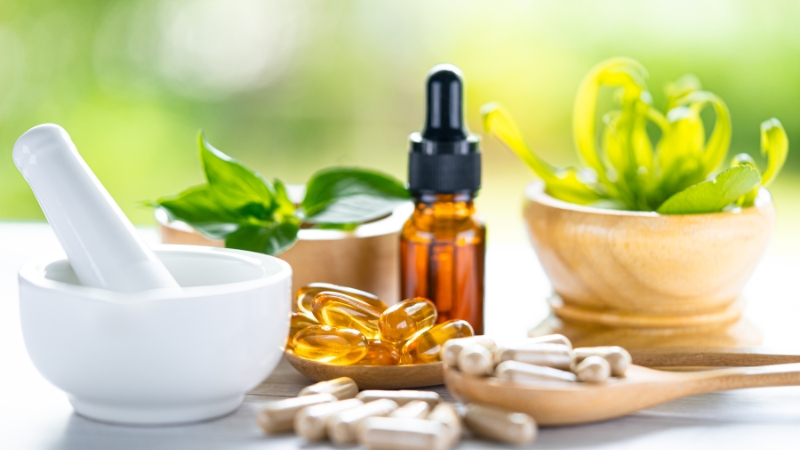
Natural approaches offer gentle and sustainable ways to ease muscle inflammation without resorting to pharmaceuticals.
These methods support the body’s built-in healing systems and reduce symptoms through targeted nutrition and external treatments.
A dual approach, nourishing internally and soothing externally, produces the most consistent results.
Nutritional Interventions
Food plays a powerful role in reducing inflammation. Focus on anti-inflammatory nutrients:
- Turmeric and Curcumin: Pair with black pepper and fat sources like avocado or olive oil to enhance absorption.
- Omega-3 Fatty Acids: Found in salmon, flaxseed, chia seeds, and walnuts, they lower inflammatory markers.
- Magnesium: Support recovery with spinach, black beans, almonds, and dark chocolate.
- Vitamin C & Protein: Citrus fruits, chicken breast, lentils, and eggs help rebuild muscle tissue.
Functional beverages such as tart cherry juice may reduce muscle soreness and DOMS. Many athletes report improvements after regular use.
Apple cider vinegar lacks scientific consensus, but some find its effects calming when diluted and consumed with meals.
Topical & External Applications
External applications provide targeted relief:
- Capsaicin Creams: Derived from chili peppers, these reduce substance P, a pain-signaling neurotransmitter.
- Essential Oils: Peppermint and eucalyptus oils can relieve pain when diluted in carrier oils like coconut or jojoba.
- Epsom Salt Baths: Soaking for 20 minutes allows magnesium sulfate to absorb through the skin, easing tension.
- Onion and Garlic Compresses: Allicin and selenium present in these foods may offer mild anti-inflammatory properties when applied externally.
Physical and Mind-Body Therapies
Recovering without medication depends significantly on how the body is treated during recovery.
Physical therapies and mind-body strategies help minimize pain, boost circulation, and reestablish healthy movement patterns.
Each method serves a purpose at different stages of healing.
Stretching and Range-of-Motion Work
Passive rest can delay healing. Gentle movement enhances circulation and prevents stiffness.
Begin with light static stretches that involve surrounding muscles, avoiding pressure on the inflamed area itself.
Include mobility drills designed to support healing without aggravation.
Examples of gentle stretches to begin with:
- Seated forward bend (hamstrings and back)
- Shoulder rolls and shrugs
- Cat-cow spinal flexion and extension
- Standing quad stretch using a wall or chair for support
Tips to follow:
Progress to more involved motions as discomfort subsides and flexibility returns. Prioritize form over intensity.
Massage Therapy
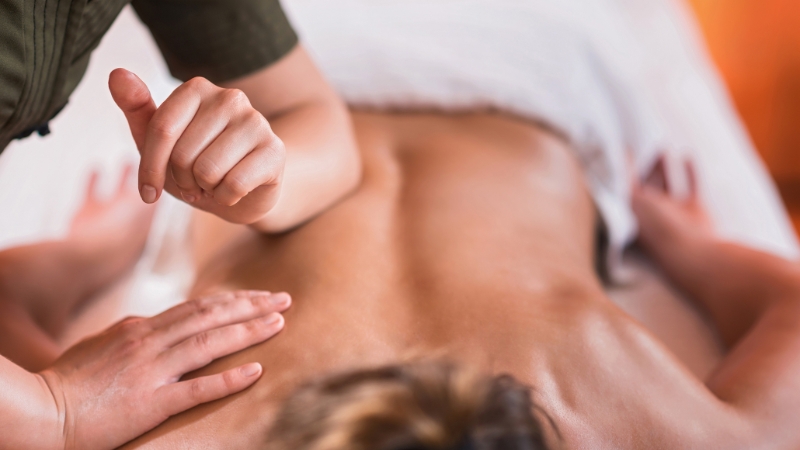
Soft tissue manipulation improves blood flow, reduces muscle tension, and decreases cortisol levels. Different methods suit different stages of recovery.
Massage types and when to use them:
- Lymphatic massage: Gentle, light strokes are used during initial recovery
- Swedish massage: Calms the nervous system and encourages circulation
- Deep tissue massage: Reserved for later stages when inflammation has reduced
Precautions:
Massage should feel relieving, not painful. Soreness that lasts more than a day suggests excessive intensity.
Hyperbaric Oxygen Therapy
A hyperbaric chamber delivers pure oxygen at higher-than-atmospheric pressure, helping oxygen dissolve more effectively into blood plasma.
This increased oxygen availability accelerates cellular repair and reduces inflammation, especially in soft tissues and overworked muscles.
Potential benefits include:
- Faster reduction of swelling and muscle soreness
- Enhanced tissue regeneration through oxygen saturation
- Improved immune response and detoxification
- Support in recovery from both acute and chronic muscular inflammation
Usage tips:
Always consult a certified technician or medical provider before use, especially if there are underlying health conditions.
Heat and Cold Alternation
@gulottawellness 🌡️ HEAT vs. ICE ❄️ – Which is right for your recovery? 🤔 At Gulotta Wellness, we get this question all the time! Swipe to discover when to use heat and when to use ice for your aches and pains. 💪 🔥 Heat Therapy: Perfect for muscle relaxation and increasing blood flow. Ideal for chronic pain and stiffness. ❄️ Ice Therapy: Best for reducing inflammation and numbing sharp pain. Great for acute injuries and swelling. Still not sure? Let our experts guide you to the best choice for your needs! Book a consultation today. 🗓️ #GulottaWellness #ChiropracticCare #HeatVsIce #PainReliefTips #HealthyLiving ♬ original sound – James Jones
Shifting between hot and cold treatments can help regulate blood flow and reduce discomfort.
Timing is key to ensure each method supports healing rather than worsening symptoms.
Suggested routine:
- Cold pack for 15 minutes to reduce swelling
- Warm compress or heating pad for 10–15 minutes to relax tight tissue
- End with cold if inflammation is still present
Additional suggestions:
Temperature therapy can be customized based on personal response, but always lean toward cold during early recovery.
Exercise and Movement
Motion encourages oxygen delivery and waste removal in tissues. Staying completely sedentary delays healing and promotes stiffness. Controlled, low-impact activity promotes steady progress.
Recommended gentle movements:
- Brisk walking on even surfaces
- Swimming or water aerobics to reduce joint stress
- Chair yoga with slow, intentional poses
- Tai chi for controlled balance and muscle engagement
Helpful reminders:
Light activity performed consistently supports full recovery. Staying engaged without overloading the body promotes strength and resilience.
Mind-Body Techniques for Pain Modulation
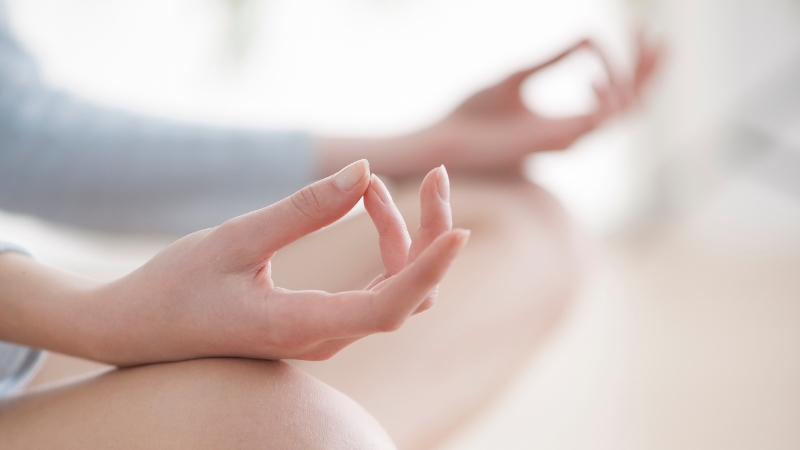
Managing pain without medication often requires working with both the body and the mind. Emotional stress can intensify physical discomfort, while mental calmness can reduce perception of pain.
Strategies that target the nervous system’s response to inflammation can shift the body into recovery mode.
Two powerful non-drug methods include meditation and the use of CBD oil.
Meditation and Breathwork
Stress elevates cortisol levels, tightens muscles, and amplifies the brain’s sensitivity to discomfort.
Breathwork and meditation provide a counterbalance by slowing heart rate, relaxing tense areas, and quieting mental chatter.
Techniques like body scanning and guided imagery reduce the brain’s focus on pain signals.
Benefits and techniques include:
- Box breathing: Inhale for 4 seconds, hold for 4, exhale for 4, hold for 4. Repeating this sequence activates the parasympathetic nervous system.
- Body scan meditation: Direct awareness slowly across body parts to identify and release tension.
- Guided visualization: Imagine calming scenes or healing light enveloping inflamed areas.
- Mindfulness practice: Stay in the present by focusing on breath, sound, or physical sensations without judgment.
- Consistency improves results. Even 10 minutes a day can reduce anxiety, muscle tension, and perceived pain.
CBD Oil
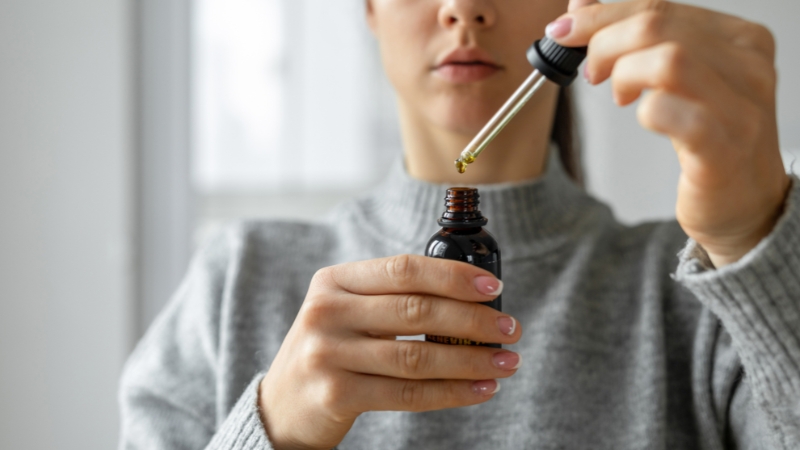
Cannabidiol (CBD) interacts with receptors in the endocannabinoid system, which plays a role in regulating pain, inflammation, and immune responses.
Unlike THC, CBD does not cause intoxication and can be taken as an oil, capsule, or cream.
Key points to consider:
- Oral CBD: Suitable for general soreness or tension. Start with a low dose and adjust based on your body’s response.
- Topical CBD: Apply directly to inflamed or tender muscles for localized relief.
- Product quality: Choose lab-tested products with clear dosage instructions. Avoid items with artificial additives or vague labeling.
- Timing: Some experience better effects when using CBD after exercise or before bedtime.
Combined with mindfulness practices, CBD may offer a soothing option to reduce pain perception and promote relaxation. Always observe how your body reacts and make changes gradually.
Long-Term Prevention & Recovery
Gradual reintroduction of activity is essential. Avoid jumping back into high-intensity workouts. Build up through progressive overload and increase resistance slowly. Focus on strengthening muscles that support the injured area.
Long-term habits matter. Anti-inflammatory diets, quality sleep, daily movement, and stress management reduce baseline inflammation. Incorporate strength training, mobility work, and regular walking. Add relaxation techniques such as journaling, reading, or stretching to your routine.
Safety and When to See a Doctor
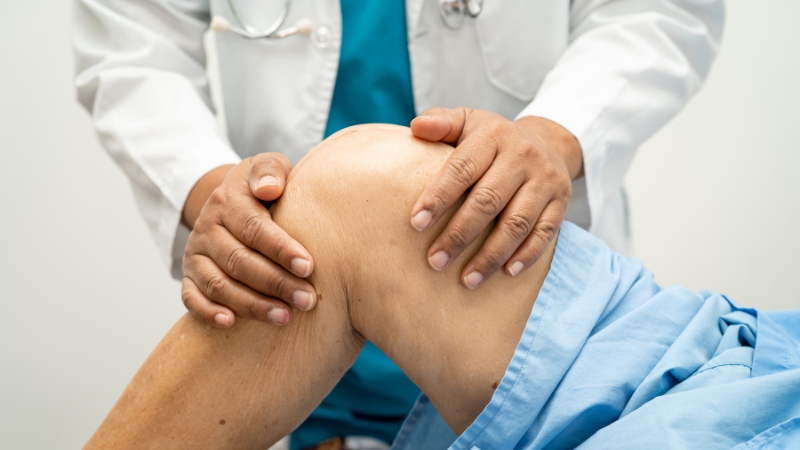
Seek professional help if pain worsens, swelling doesn’t subside, or if bruising spreads.
Persistent discomfort may signal tears or nerve involvement. Also, be cautious when combining natural remedies with existing medications. Herbal supplements and oils can interfere with prescriptions.
Get a proper diagnosis for repeated flare-ups to rule out underlying conditions such as autoimmune disorders or infections.
Related Posts:
- Lower Back Pain While Running? Here's What You Need to Know
- How Can You Start a Career as a Running Coach?
- Should You Run on an Empty Stomach? Pros and Cons Explained
- How Long Does It Take to Train for a Half Marathon?
- Tendonitis, Shin Splints, and Other Common Leg…
- 25 Simple Running Motivation Tips To Get You Moving
